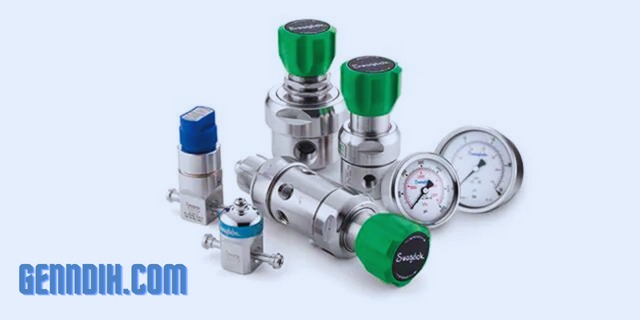
Each gas handling system must have regulators as a necessary component. They are essential in keeping the proper pressure of the gas flowing through a system, which is essential for ensuring the equipment is operated safely and effectively. Gas regulators may be divided into two categories: low-pressure regulators and high-pressure regulators. We will contrast the two categories in this essay and talk about when each is most suited.
Low-Pressure Regulators:
Low electric pressure regulators are made to bring the gas pressure from a high-pressure source down to a more controllable level. They are primarily employed in low-pressure gas applications, such as those found in home gas systems and laboratory environments. Gases like natural gas, propane, or butane are commonly subject to pressure regulation using low-pressure regulators.
Low electronic pressure regulator for water works by gradually lowering the gas pressure in two stages. From the high-pressure source to an intermediate pressure, the gas’s pressure is decreased during the first step. The intermediate pressure is further decreased to the ultimate, desired pressure in the second stage. Small and simple to install on a gas line, low electric pressure regulators are usual.
High-Pressure Regulators:
Gas pressure from a high-pressure source can be lowered to a lower, more controllable pressure using high-pressure regulators. They are often employed in situations where high-pressure gas is required, such as industrial settings or for powering machines, unlike control pressure regulators. Normally, high-electric pressure regulators are used to controlling the pressure of gases like argon, oxygen, or nitrogen.
High-pressure regulators work by lowering the gas pressure all at once. A piston, diaphragm, or other pressure-sensing device is used to carry out this procedure. As they are made to manage high flow rates, high-pressure regulators are often significantly bigger than low-pressure regulators. Also, they may need extra safety precautions, such as relief valves or pressure gauges, and are more complicated.
Low-Pressure vs. High-Pressure Regulators: Which is Right for You?
The kind of gas being utilized, the necessary flow rate, and the target pressure all play a role in selecting the best regulator for your gas handling system. A low electric pressure regulator is probably the best option for uses that call for a steady and low gas supply, such as those found in homes or laboratories. These regulators can manage low flow rates and are compact, simple to install, and straightforward to use.
On the other hand, a high-pressure regulator is probably the best option for applications that demand a high gas flow rate or a high-pressure output, such as in industrial settings or for powering machines. These regulators can manage high flow rates and are often bigger in size and more sophisticated. Also, they could contain extra safety measures that are necessary for industrial situations.
Conclusion:
Regulators for both low and high pressures are necessary parts of any gas handling system. The proper regulator should be chosen based on the particular needs of your application, such as the gas type, flow rate, and target pressure. You may select the optimum regulator for your particular application and ensure the secure and effective functioning of your gas handling system by being aware of the distinctions between low-pressure and high-electric-pressure regulators.







